Nature’s horror stories include mind-controlling parasites that turn bugs into zombies
Science
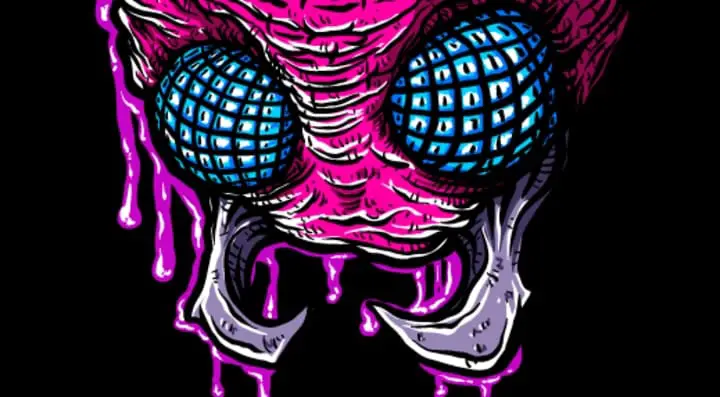
1. The ant who showed off his colorful abdomen
Who said mind control was science fiction? Certainly not these disturbing parasites, who easily control their hosts’ behavior. How they do it is not entirely clear, but it is certainly with finesse. You might even call it elegant, but you’d definitely call it horrifying. From worms to wasps to fungus, there’s amazing diversity in mind-controlling parasites. Some of them turn their host into a sort of zombie servant that does their bidding, while others prefer to make the host just act weird enough to get eaten. Several of them could have been the inspiration for the chest-bursting scene in Alien, but all of them are extremely unsettling. There’s even a few that infect humans…
Many of these parasitic tales are a case of “careful what you eat,” but this one goes all the way to “careful what you eat or you will start to look like food.” The parasitic nematode Myrmeconema neotropicum impacts its host’s looks than its behavior. First, ants accidentally eat the parasite, then the nematodes mate in the ant’s abdomen and lay their eggs. In time, they make the ant’s abdomen bright red.
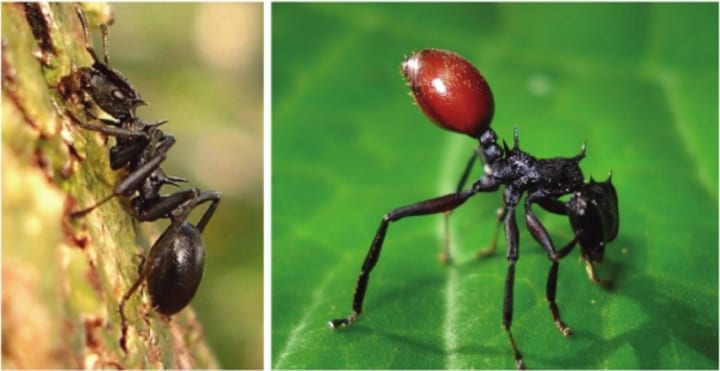
Sites at Penn State
Previously, the ant was pure black, but now the ant’s butt looks just like a red berry. However, the nematode doesn’t stop there, it makes the ant walk funny: holding his red butt up high. Birds spot this pseudo-berry and likely eat it, inadvertently consuming the ant and parasites. Soon enough, they excrete the nematodes, which ants accidentally feed to their larvae (aka their babies), infecting them.
2. The ant that became a mushroom, sort of (part 1)
In the jungle, the mighty jungle, a fungus sleeps tonight. Its spores are on the ground, waiting for the right ant to come by. It works its way into an ignorant ant host, who starts behaving a bit weirdly. It’s colony members might even recognize its weird behavior and carry it off, away from the rest of the colony.
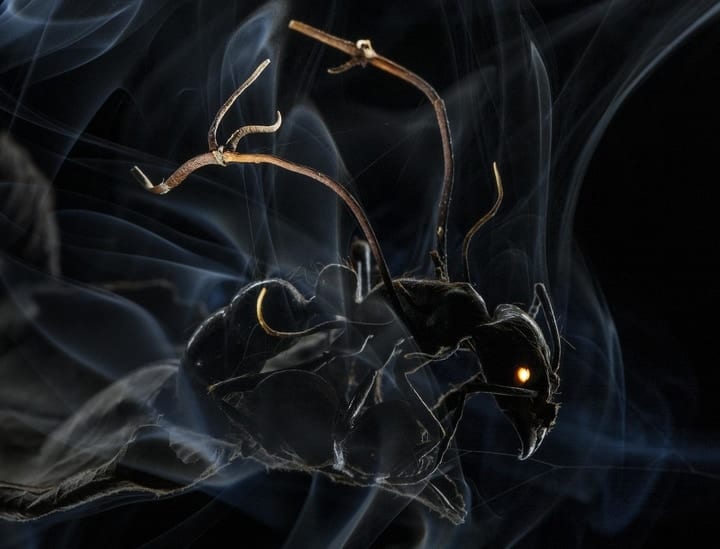
Anand Varma
However, the fungus, Ophiocordyceps unilateralis, will not let the ant stay away for long. The parasitic fungus takes control of the ant’s muscles and forces it to crawl high up a plant or tree, and clamp its mandibles down on a leaf. There, the ant waits for a gruesome death.
3. The ant that became a mushroom, sort of (part 2)
There are several species of Ophiocordyceps fungus and they all seem to prefer a specific type of host. This one only likes carpenter ants, probably because that’s who it evolved next to. But the fungus is not friendly toward its neighbors. Sometimes, the parasite will make its ant host stop above its colony’s foraging pathways.
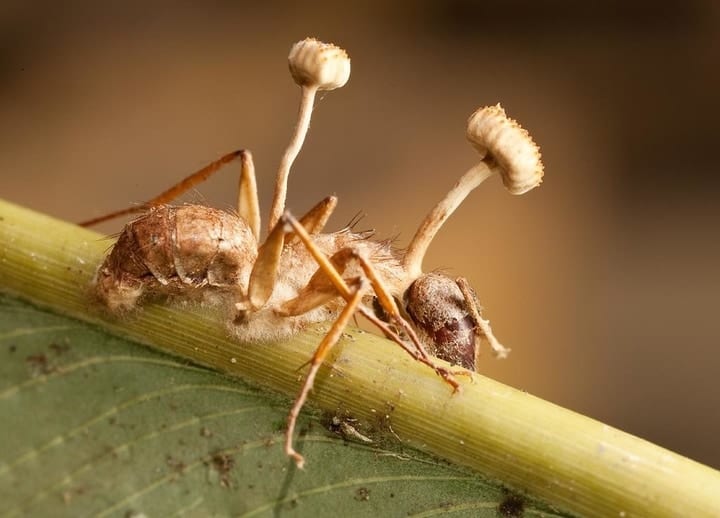
Reddit
This way, the fungus can maximize who it infects, because other ants are just underneath. Once the ant is in place, the fungus hollows out its host and then bursts out from its dead body. It grows a reproductive stalk (similar to a mushroom) out of the ant’s head, reaching high up to disperse its spores and start the process all over again.
4. The spider who made its last web (part 1)
While many people think spiders are the stuff of nightmares, have you ever thought about what a spider’s nightmare is? At least for Plesiometa argyra, the orb weaver spider, the nightmare is the wasp Hymenoepimecis argyraphaga. This parasitoid wasp feasts on and enslaves the spider, at the same time.
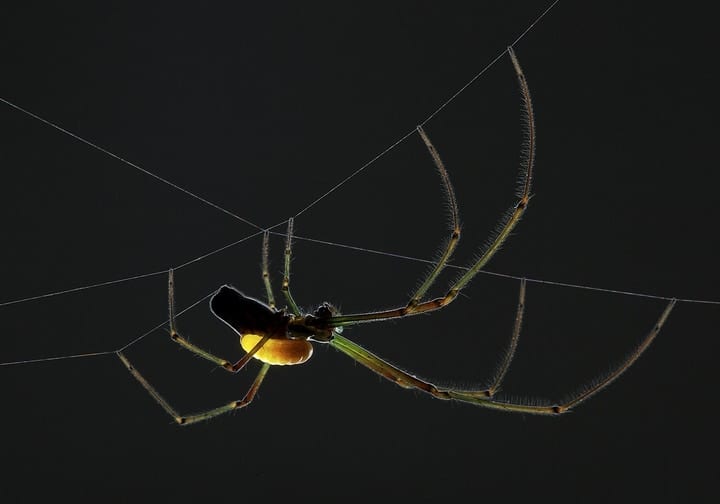
Anand Varma
The female wasp first stings the spider, paralyzing it, and then lays an egg on the spider’s back. Once her handiwork is done, she sits back and lets it all unfold. Like a vampire, the parasitoid larva lives off of the spider’s blood (or, more accurately, its hemolymph, the insect equivalent of blood). The spider is all business as usual, but it doesn’t realize what’s coming next.
5. The spider who made its last web (part 2)
While the spider has gone about doing regular spider things for awhile, with a hemolymph sucking parasite on its back, things are about to change for the worse. The larva injects chemicals into the spider, to take control of its mind. The parasite forces the spider to make a new kind of web.
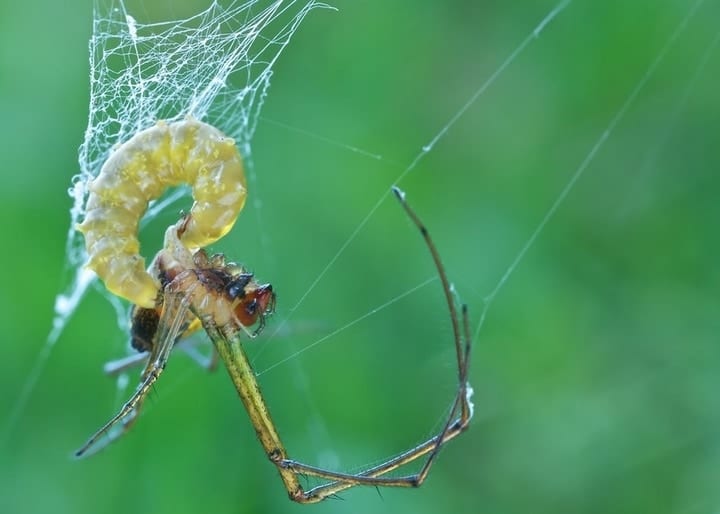
Paul Bertner
This web isn’t like the orb spider’s normal one at all; it’s only a few reinforced threads rather than a complex pattern. The threads meet in the middle, where the wasp larva will make its cocoon. This construction keeps the wasp away from predators on the ground and is strong enough to not crumble under rain. But before the wasp makes the cocoon, it first sucks the spider dry, and then dumps the carcass.
6. The male crab that became a mother (part 1)
In a gruesome tale of parasitic castration, the barnacle Sacculina and sheep crab Loxorhynchus grandis are the stars. The barnacle is not like the barnacles you’ve seen; it doesn’t have the typical shell you associate with barnacles. It also doesn’t live by attaching itself to creatures, but instead by living inside them.
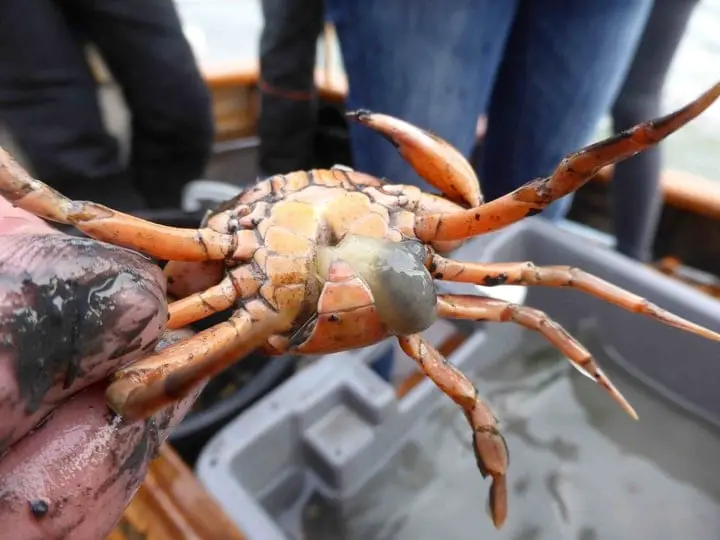
Beach Explorer
The parasitic barnacle larva, which looks like a little slug, wriggles its way into an unwilling sheep crab. To do this, it cements itself onto the weakest part of the crab’s carapace and then makes a hollow, dagger-like weapon. Using this, the barnacle injects some of its cells into the crab’s circulatory system. It begins to grow “roots” inside the crab, eating its nutrients…
7. The male crab that became a mother (part 2)
Off the coast of California and Mexico, in the Pacific Ocean, a disturbing set of events are about to occur that would make anyone cringe. The crab can no longer grow, because the parasite is using too many of its nutrients. But the barnacle isn’t concerned, it has other plans for the crab.
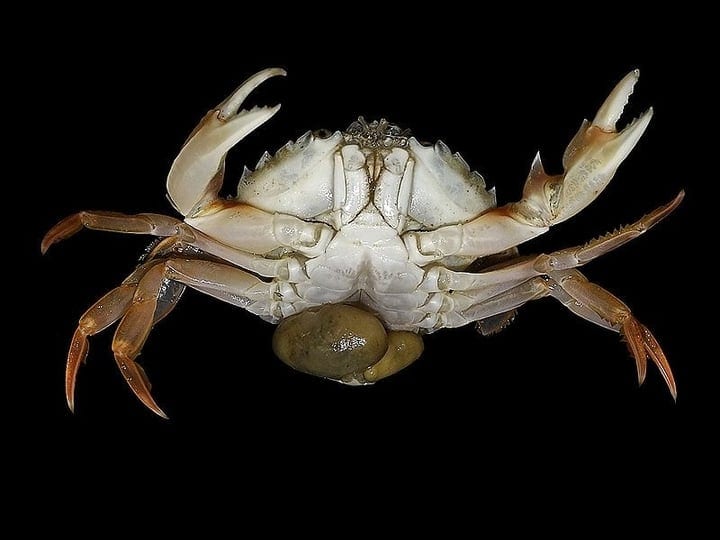
Parasite Ecology
First, it needs to make some alterations if its host is a male crab. The parasite widens the male’s abdomen, shrinks his gonads, keeps him from developing fighting claws, and renders him infertile. It essentially makes him a female. Now, the barnacle is ready to proceed with its manipulation and mind control.
8. The male crab that became a mother (part 3)
The parasitic barnacle forms a blob on the underside of the crab’s abdomen. The blob carries the parasite’s eggs, right where a normal crab would hold her own eggs. Next, the parasite activates the crab’s maternal instincts. She doesn’t realize that these aren’t her own eggs.
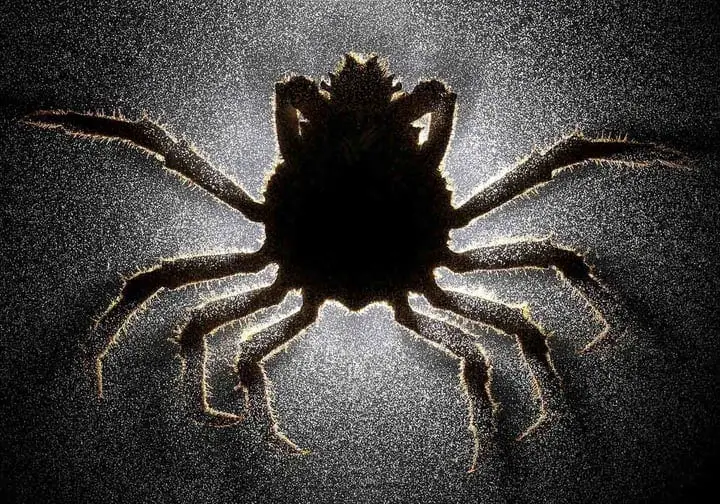
Anand Varma
Under the barnacle’s thrall, the crab cares for the eggs as if they were her own. She swims away from other crabs, like any “pregnant” crab would normally do. Then, after a male barnacle comes along to fertilize the eggs, the crab shakes herself to help disperse the larvae as she would for her own. Eventually, the parasite dies and the crab is left alive, but unable to make her own babies.
9. The cricket who jumped to his death (part 1)
In the rivers and streams of North America, the horsehair worm lays its eggs, anticipating their long journey to adulthood. Upon hatching, the worm larvae make a protective cyst around themselves. Now, they are ready to be eaten by the larvae of an insect, like a mosquito.
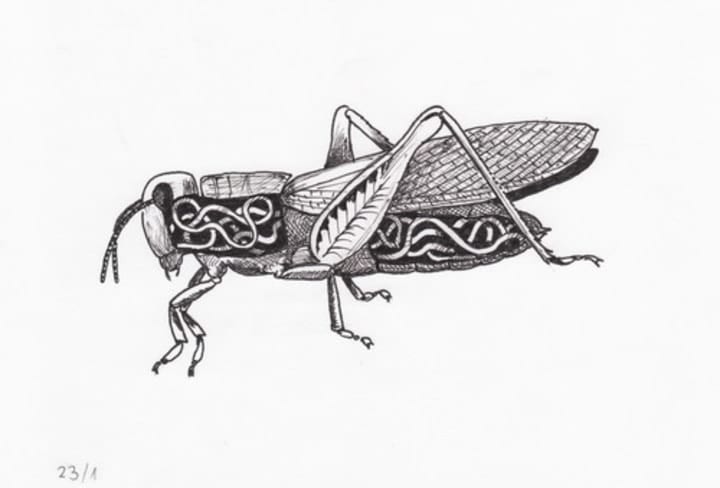
The Portal of Knowledge
The mosquito matures into an adult and flies away, unknowingly bringing the little worm larvae with it. But the mosquito is soon chomped on by a cricket (or perhaps a grasshopper). This is where the worm really gets to work and starts maturing into an adult. Some grow to be a foot long. However, the cricket is about to fall prey to the worm’s creepy mind tricks.
10. The cricket who jumped to his death (part 2)
The worm starts small. It stops the cricket from doing its trademark chirping, to avoid attracting the attention of a predator. It wouldn’t want to be eaten, because that would ruin the plan. The worm feeds off the cricket’s fats and sugars by absorbing food right through its skin.
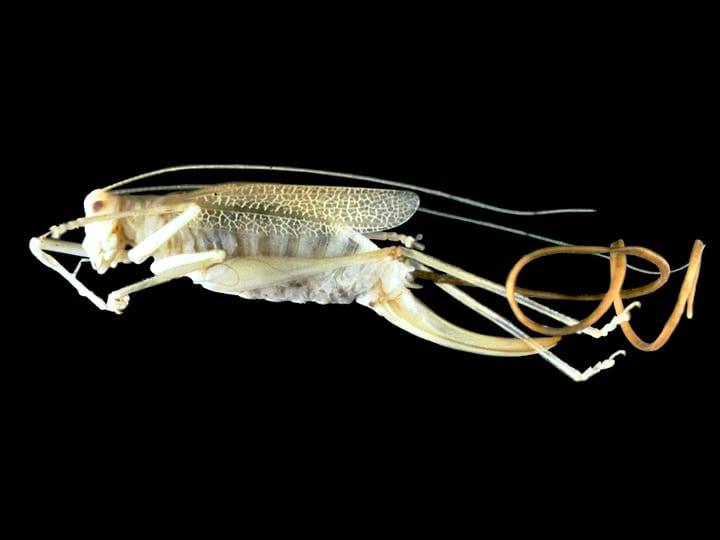
Comic Vine
On the outside, the cricket looks healthy and fine, but on the inside, the adult worm has taken the reins. The parasitic worm dumps neurotransmitter chemicals into the cricket, which affect its central nervous system, completely overriding what evolution has worked on for millions of years. Suddenly, the cricket is very interested in finding water.
11. The cricket who jumped to his death (part 3)
Normally, crickets stay far away from water. They get hydrated through food and dew drops. But now the parasite forces it to use its humidity-sensitive antennae to seek out a body of water. It forces the cricket toward water, but the insect can’t swim.
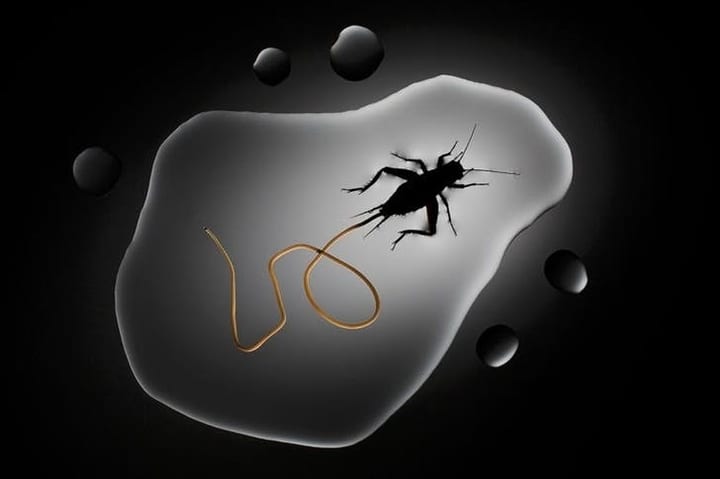
Anand Varma
That doesn’t matter to the worm, though, and it makes the cricket jump to its death and drown itself. The parasite exits the backside of the cricket, emerging into the water to reproduce and make new eggs. Sometimes, the crickets don’t drown and are instead eaten by a fish. A very lucky few escape and continue to live their life, possibly traumatized.
12. The cockroach who lost the will to move (part 1)
In a creepy tale of elegant mind control, the jewel wasp causes her victim to lose all free will. The female jewel wasp first mates with a male and fertilizes her dozens of eggs. Then, she finds her victim and the future nanny for her baby. She’s got her eye on a nice cockroach; it’s several times larger than her, but cockroaches are very fashionable nannies in the jewel wasp world.
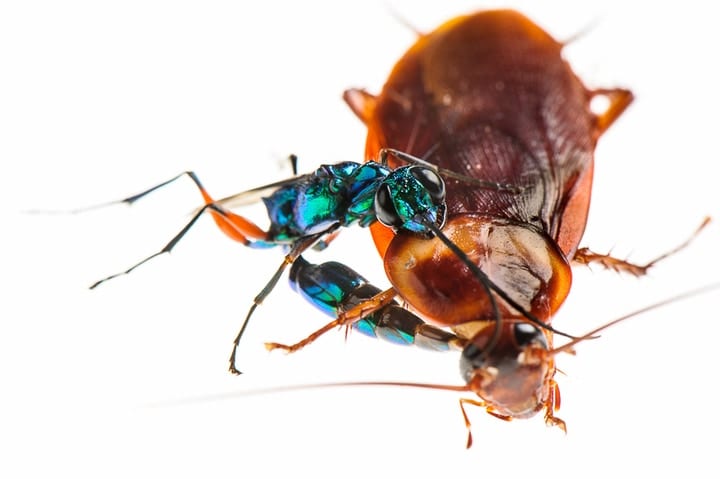
Emanuele Biggi
Once she’s found her cockroach, she stabs it with her stinger to paralyze its front legs. Next comes the delicate part, she carefully inserts her stinger into its neck. She navigates through its brain to find a particular spot, which she injects venom into and disables. Suddenly, the cockroach has lost all will to move. It can, but it just doesn’t care to.
13. The cockroach who lost the will to move (part 2)
Scientists don’t exactly understand what chemicals the jewel wasp uses on her cockroach victims, but they do know that after they’re injected in the brain they obsessively groom themselves for half an hour. In the meantime, the wasp flies off to find a burrow. This burrow will serve as a nursery for her larva and a tomb for the cockroach.
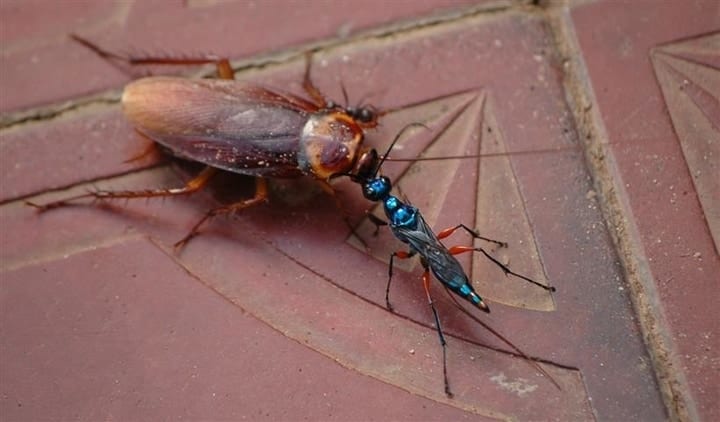
The Silent One
When she returns, she bites off one of the cockroach’s antennae and sucks out its hemolymph. Now she’s all energized and ready to continue. She leads her hapless victim along by clamping her jaw on the antennae stub. The cockroach moves just fine, following her along into the burrow like a mindless zombie dog.
14. The cockroach who lost the will to move (part 3)
Once inside the tomb/nursery, the jewel wasp lays a single egg on the cockroach’s abdomen. She uses pebbles to seal up the burrow, keeping her little one safe, and leaves to find another victim. The cockroach could move, but it doesn’t. The egg soon hatches. The larva eats its way into the cockroach, and munches on everything but the essential organs, keeping it alive.
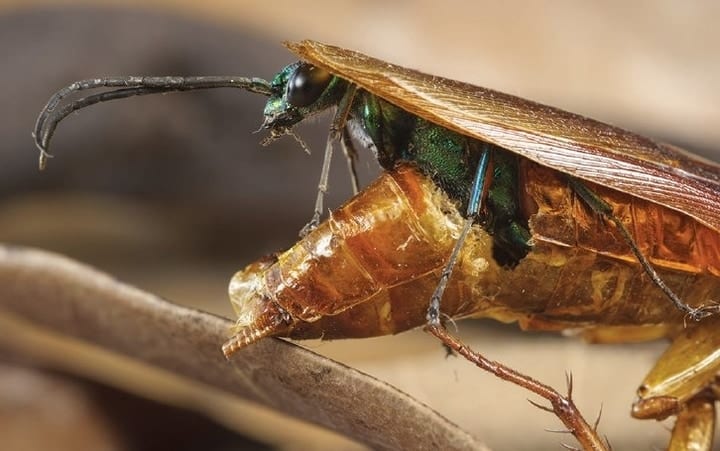
Scientific American
But once the baby has grown enough, it hollows out and kills the host. Then it makes sure to cover the cockroach in a paste that keeps it from rotting, so it can metamorphosize inside the dead carcass. Upon emerging, the now mature wasp can go find its own mate to start the whole process all over again.
15. The caterpillar that survived, but not for long (part 1)
While happily chewing leaves, a caterpillar has an encounter that completely changes the course of its life, for the worse. A female Glyptapanteles parasitoid wasp sticks her ovipositor right into the caterpillar and deposits her eggs inside. She injects up to 80 eggs into one unsuspecting caterpillar. Thus begins a harrowing tale.
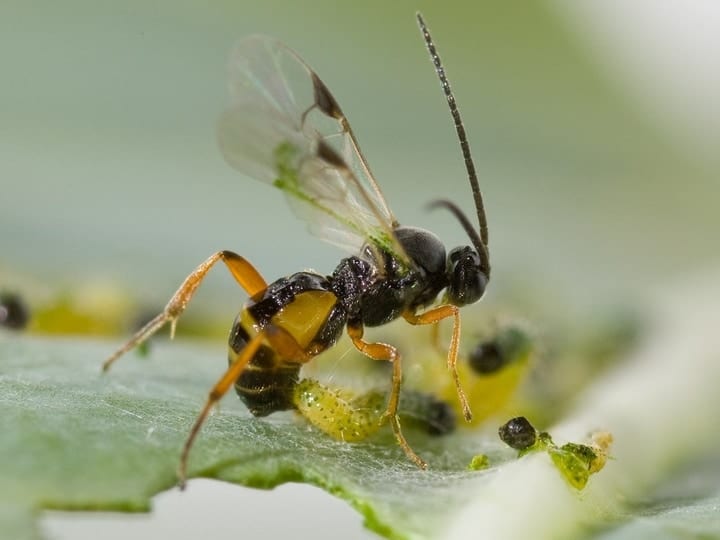
Scribol.com
Inside the insect, the eggs hatch and tiny larvae find themselves in a warm, safe place full of food. They eat the bodily juices, like hemolymph, of the caterpillar. But they take care to avoid any vital organs, because they definitely can’t have the caterpillar die just yet.
16. The caterpillar that survived, but not for long (part 2)
Inside the warm, cozy caterpillar, the larvae grow and molt, shedding their exoskeletons. On the outside, the caterpillar looks bloated and fat, but otherwise acts normal. Once the larvae are about the size of a grain of rice, they’re ready to get out into the world. The wasp larvae first paralyze the caterpillar and then, all at once, they emerge.
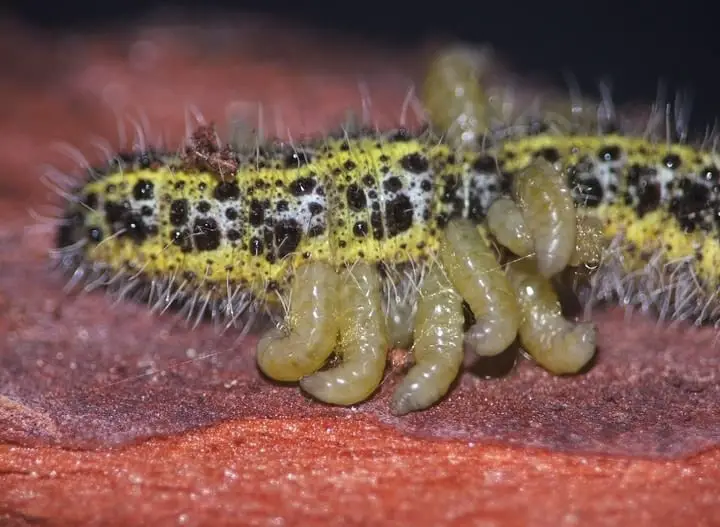
Scribol.com
It takes about an hour for them to chew their way out. But the caterpillar isn’t dead yet. How does it survive little wriggling larvae coming out of all its sides? Well, scientists think it’s because the larvae shed their last molt while leaving. Perhaps these exoskeletons clog up the holes, because the wasps certainly aren’t done with the poor caterpillar yet.
17. The caterpillar that survived, but not for long (part 3)
After the larvae burst out of the caterpillar, the mind control begins. Two parasitoid wasp larvae have stayed inside the caterpillar, to control it like a puppet. They use chemicals to make it do their bidding, but for them it’s a suicide mission. They’ve stayed behind to help their siblings, but they’ll die soon. Meanwhile, the caterpillar and larvae on the outside work together to make a cocoon for each one.
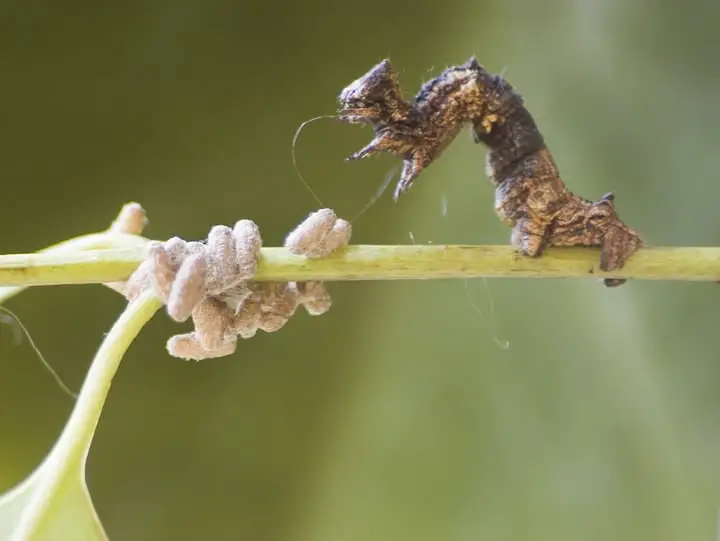
Extraordinary Animals
Then, the caterpillar stands guard. It does this for several days, not eating, but just fighting anything off that comes close. Other insects might come and try to eat the babies, but one of the worst threats are hyperparasitoid wasps. They want to inject their own eggs into the cocooned parasitoid wasps. The caterpillar stays until the wasps emerge as adults, then dies of starvation.
18. The ladybug that got more than meets the eye (part 1)
The parasitoid wasp Dinocampus coccinellae uses ladybugs similarly to how Glyptapanteles parasitize caterpillars. However, this one has a partner in crime. First, the lady wasp injects her egg into a ladybug. The larva hatches and grows inside, feasting on the ladybug’s innards.
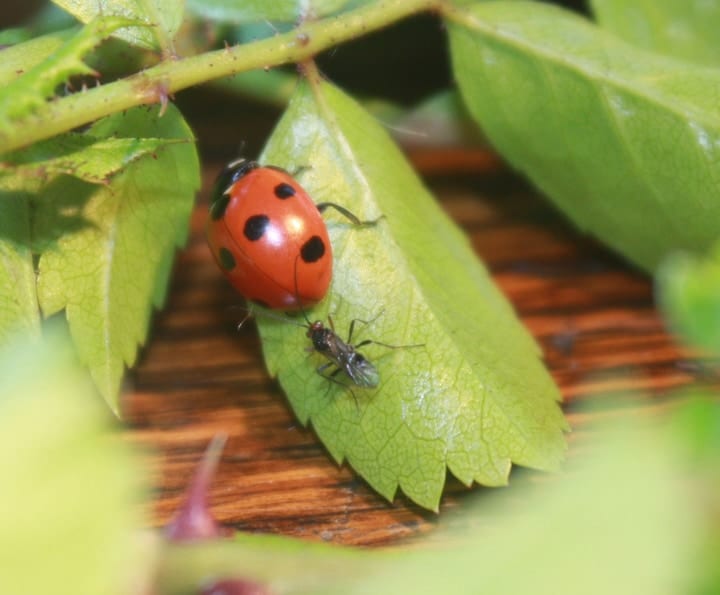
Centre for Ecology & Hydrology
After a few weeks, the larva eats its way out and spins a cocoon right under the ladybug. The ladybug, mostly paralyzed, stands guard over the cocoon. Ladybugs make great bodyguards because they secrete poison and their colors already warn predators away. But what is causing the ladybug to stay? Scientists think it’s something that came with the wasp egg…
19. The ladybug that got more than meets the eye (part 2)
It turns out that the wasp larva wasn’t the only one in the ladybug, its mom had injected a virus along with it. The virus spread throughout the ladybug, but avoided its brain until the larva was about to emerge. Then, when the larva eats its way out, the virus invades the ladybug’s brain and wrecks havoc.
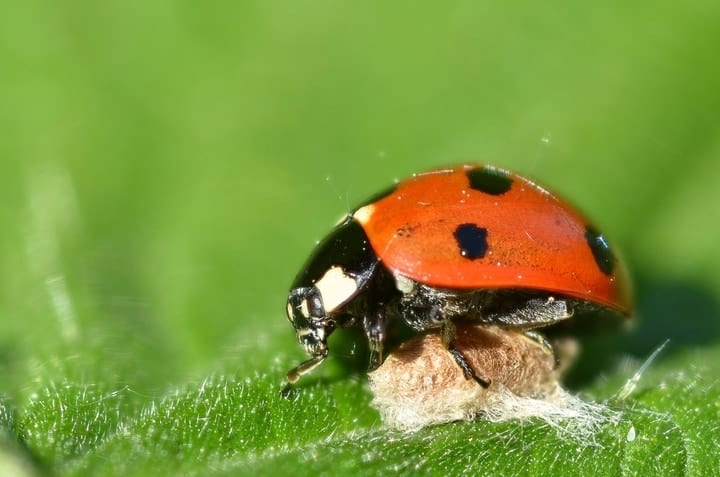
Popular Mechanics
Scientists believe it’s this virus that keeps the ladybug standing guard for days. But, don’t worry, it isn’t over for the ladybug! Amazingly, after the wasp leaves the cocoon, about 25 percent of parasitized ladybugs actually survive the ordeal. They live on to tell the tale and might even get parasitized again.
20. The mouse who showed no fear (part 1)
This next story is an unsettling tale, as it’s a story of mammal mind control and it hits close to home. A little too close to home. While mind controlling parasites most often infect insects, not mammals, Toxoplasma gondii makes rodents defy everything natural selection has worked so hard for.
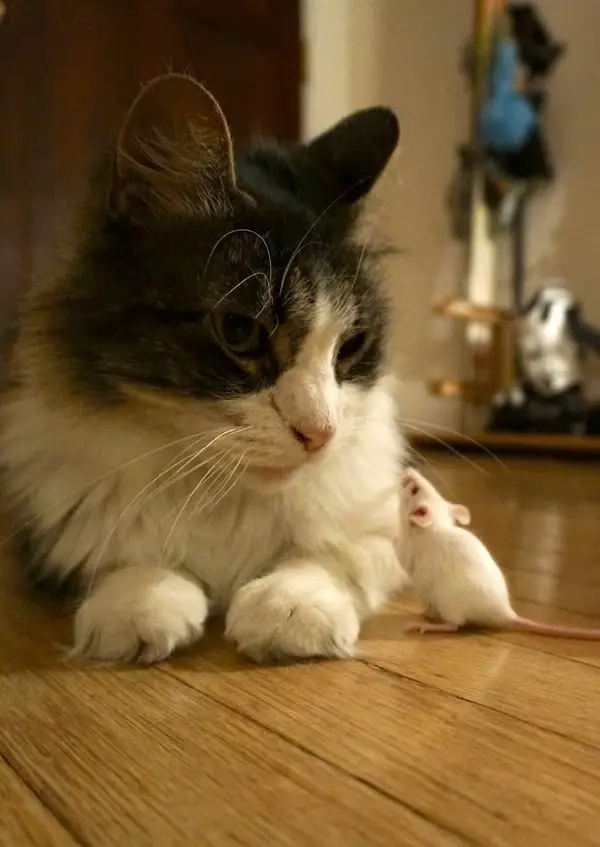
Phys.org
While looking for food, an unfortunate rodent might accidentally eat some cat feces. The mouse, or rat, ingests the parasite Toxo and undergoes some serious changes. Previously, the smell of cat urine would make the mouse flee in the opposite direction, but now it’s unnervingly attracted to it. Research suggests the rodent may even be sexually aroused by cat odor…
21. The mouse who showed no fear (part 2)
Being attracted to a predator is never a good thing, and so it does not end well for the mouse. The mouse isn’t afraid of cats anymore, so it makes a very easy meal. The parasite has gotten its wish and is now inside a cat’s intestines, where it can reproduce. Once Toxo multiplies inside the cat, the eggs can only get out one way: the back way.
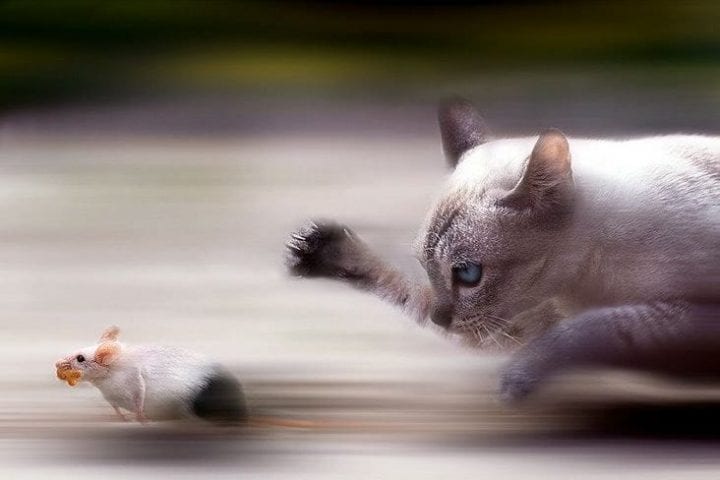
The Party Project
Humans can pick up the parasite, just like rodents. About 30 percent of humans have Toxo, which travels through the blood and into the brain. Luckily, our immune systems usually keep it in check, unless the human in question is pregnant, sick, elderly, or immunocompromised. Then, things can get dicey. It can cause serious injury. However, some scientists think it may even affect human behavior…
22. The person that cleaned the litter box
Humans can get the Toxo parasite from litter boxes, but this is actually less common than other ways. Surprisingly, pet cats aren’t usually the ones who give people Toxo, because they either aren’t eating infected rodents or they have it for three weeks and then become immune. People get Toxo from infected food, like meat or produce, because feral cats defecated in the soil. Makes you feel better, right? At least about your pet cat(s).

Richmond Family Magazine
However, Toxo may be doing some really weird stuff to the people it infects. It’s correlated with schizophrenia, traffic accidents, and self harm, but nothing has yet shown it causes these. Plus, it might even make men more suspicious, withdrawn, and rule-breaking, while doing the opposite to women. Research hasn’t shown Toxo actually causes behavioral changes in humans yet, but who knows, perhaps it even makes infected people like cats more than normal.
23. The person who caught the flu but partied anyway
Another potentially human mind controlling parasite is actually a pretty common one: the flu. The influenza virus, aka the flu, spreads from person to person through skin contact, saliva, the air, and contaminated surfaces. It wants its host to be around other people, so it can spread as much as possible.

Conway Homer
Research suggests that the virus may be making people more social. Scientists studied flu vaccinated people before and after they got the shot. After getting vaccinated, people were more likely to go to parties or bars and came into contact with a lot more people than before they got vaccinated. So it isn’t confirmed, but it’s possible the virus is influencing people’s behavior.
24. The green eyed snail that looked too much like a caterpillar (part 1)
A snail is minding his own business, scooching along a leaf, when he spots some bird droppings. Apparently he thinks this will make a delicious meal, so he eats it, accidentally jump-starting the events that will lead to his death. He might not notice at first, but the green banded broodsac, a gross little flatworm, has found its host.
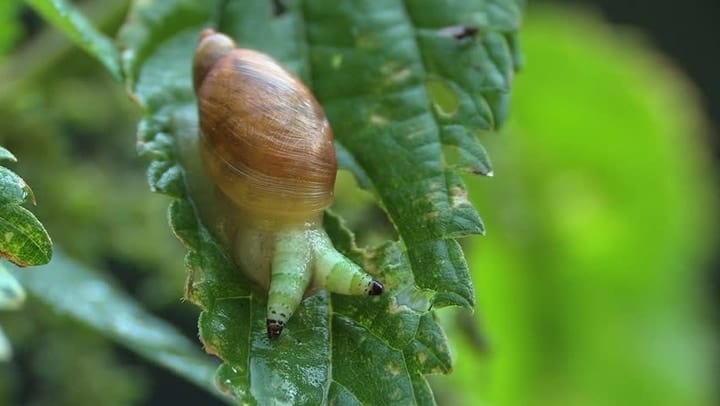
Omnilexica
The parasite worms its way to the snail’s eye stalk. It makes it bulge out, looking juicy and large and green. A second worm probably finds its way into the other eye and they pulse like they’re alive, like they’re caterpillars. Unfortunately for the snail, a caterpillar’s life isn’t just about being hungry and eating a hole through everything.
25. The green eyed snail that looked too much like a caterpillar (part 2)
In the animal world, you never want to look too much like a piece of food. Unfortunately for this snail, it’s too late. The worms don’t just want to be a passive piece of food, they want to get eaten, so they make the host move up to exposed parts of the plant.
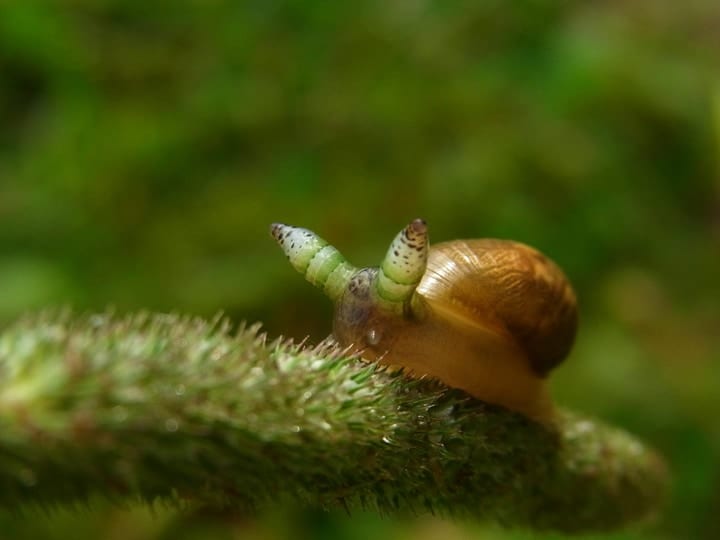
Fiveprime
The snail now spends its time in well lit places, high up, where it can be easily seen by a bird. The parasites hope a bird will mistake the snail for a tasty caterpillar, because once it’s eaten, the parasitic flatworms can live and reproduce inside the bird. The bird then excretes its eggs, where another snail might find them.
26. The fish that swam too close to the surface (part 1)
Bird excrement is a preferred method of transport for parasites, it seems, as it’s a common theme throughout these disturbing tales. This one begins in the estuaries of California and the Baja Peninsula, where the rivers flow into the sea. Here, horn snails eat bird feces and slurp up parasite eggs.
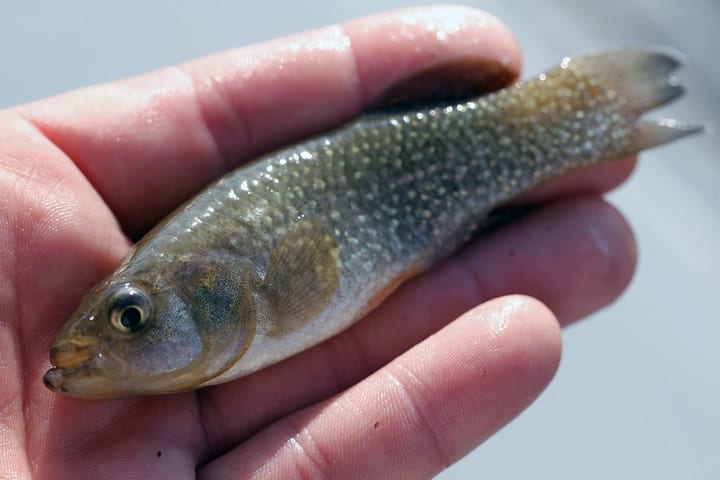
Gulf of Mexico Research Initiative
This sneaky creature is a type of parasitic flatworm, aka a fluke, called Euhaplorchis californiensis. Its eggs hatch and live inside the snail, but after awhile they swim out into the water, looking for their next host. Upon finding a killifish, the flatworms worm their way into the fish through its gills, and begin phase two of their parasitism.
27. The fish that swam too close to the surface (part 2)
Once in the killifish, the worms make their way to its brain and pour chemicals into it. Soon enough, the fish begins acting differently. It’s a bit of a spazz. It jerks and jumps, and risks swimming near the surface, where its silver belly glitters in the light as it rolls around.
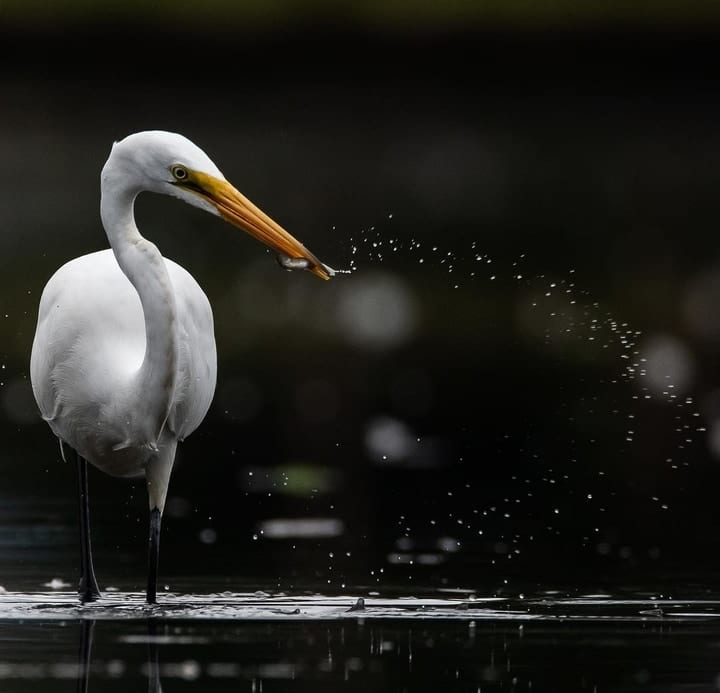
Deskgram
The parasite seems to have altered the fish’s hormone levels, specifically its serotonin and dopamine. It is now around 30 percent more likely to get caught by a hungry bird. So once a bird snaps up the killifish, it consumes both its intended prey and the parasite. Now the parasite can lay its eggs, because it certainly hadn’t gotten there by just a fluke.
28. The ant that begged to be eaten by a cow (part 1)
Another fluke, a parasitic flatworm, goes about its life a little bit differently. This story still starts with snails, but it takes place on land. Land snails unknowingly eat the eggs of the lancet liver fluke, Dicrocoelium dendriticum, which then hatch inside them. The snail’s body doesn’t like this.
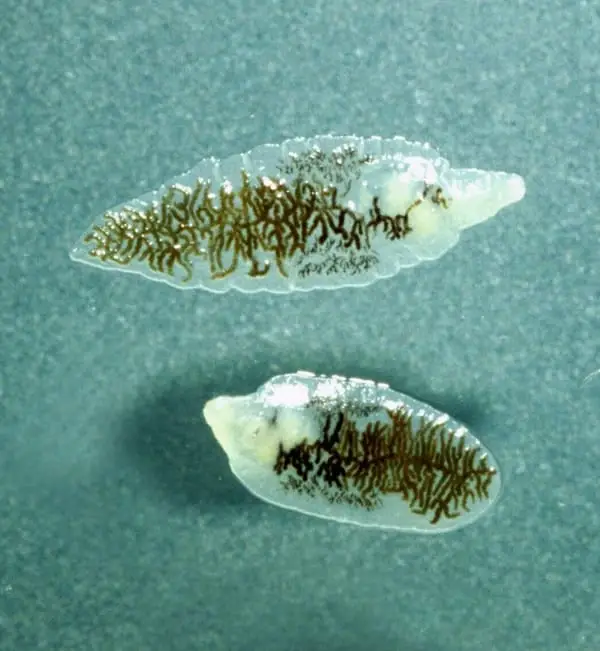
Wikipedia
The snail’s body tries to protect itself and closes the parasites in cysts. Then, the snail coughs up the flukes, which at this point are little balls covered in mucus. But they look tasty enough to ants, who take them back to feed their babies. Well, now they’ve gone and infected their larvae.
29. The ant that begged to be eaten by a cow (part 2)
At this point, the ants have probably doomed their babies. The larvae grow older and the parasites find their way to the ant host’s brain. Most often, this happens in grasslands or even agricultural land, so the parasite takes advantage of the landscape during its mind control. The parasite makes the ant climb up a blade of grass, to its death.
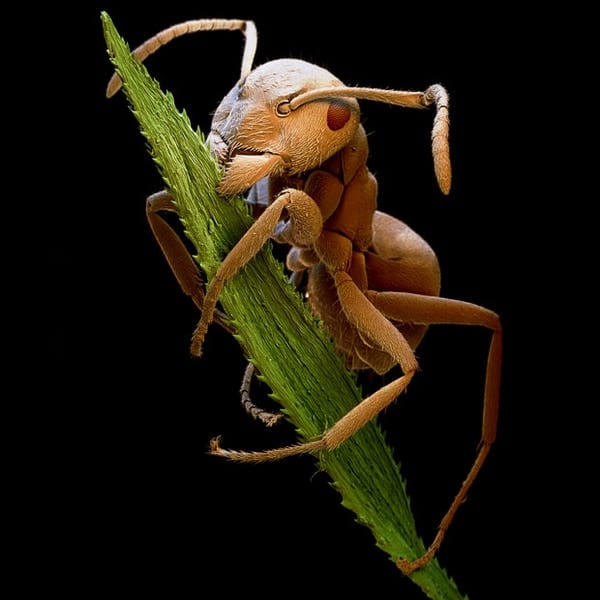
The Rag Blog
At the tippy top, the ant waits until it’s eaten by a cow or sheep. These grazers accidentally swallow the ant, while munching on the grass. Finally, the fluke has found its primary host. There, they live and mate and make eggs that come out the other end of the host, landing into the path of a happy little snail.
30. The mosquito that ate too little and too much
In tropical, rural areas a deadly parasite, Plasmodium, finds its way to a mosquito host. It needs the warmth that the mosquito’s body can provide and it also needs some time to grow. To keep the mosquito out of harm’s way, the parasite infiltrates its mind. Plasmodium is only a single celled protozoan, but it kills thousands of people a year.
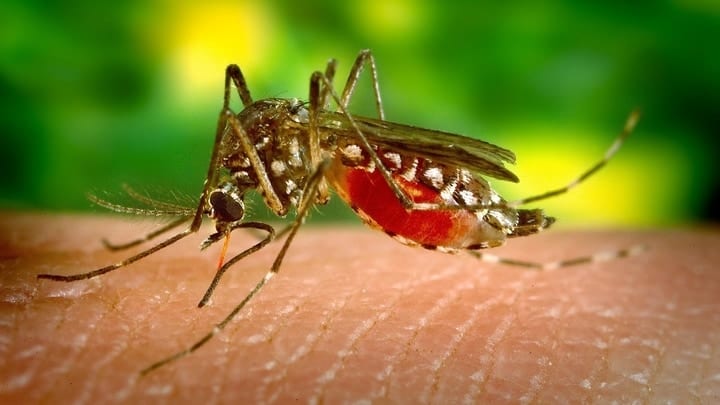
MIT Technology Review
Plasmodium makes the mosquito eat a ton of nectar, but it also keeps the host from feeding on human blood. The mosquito gets a few meals in, but the parasite doesn’t want it to get swatted. Yet. Once Plasmodium is ready, it makes the mosquito gorge itself on as much blood as it can get. The mosquito may be full, but the parasite doesn’t care. This is how it gets transmitted to humans, where it inflicts malaria and becomes deadly.